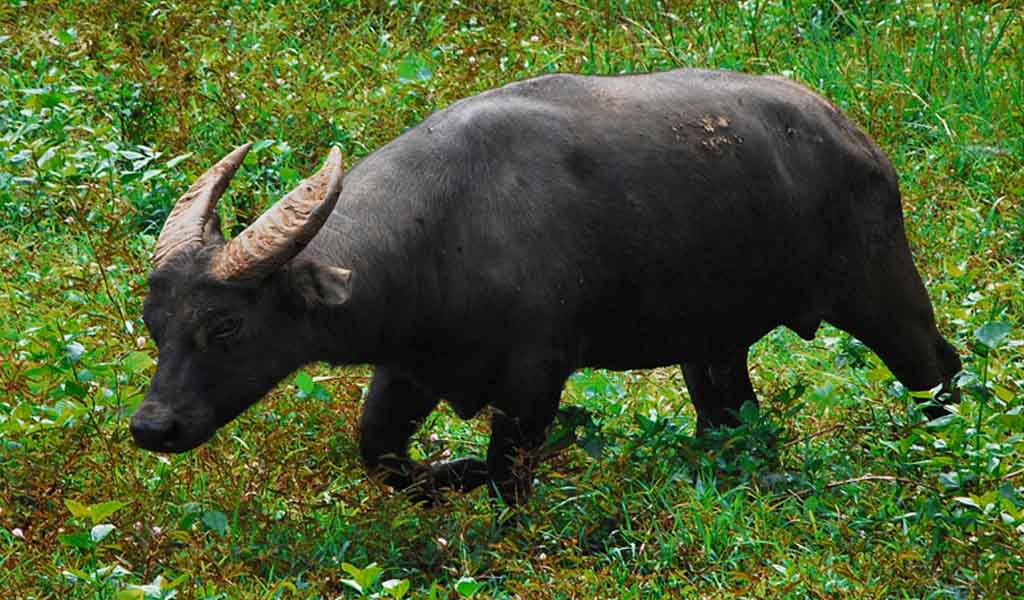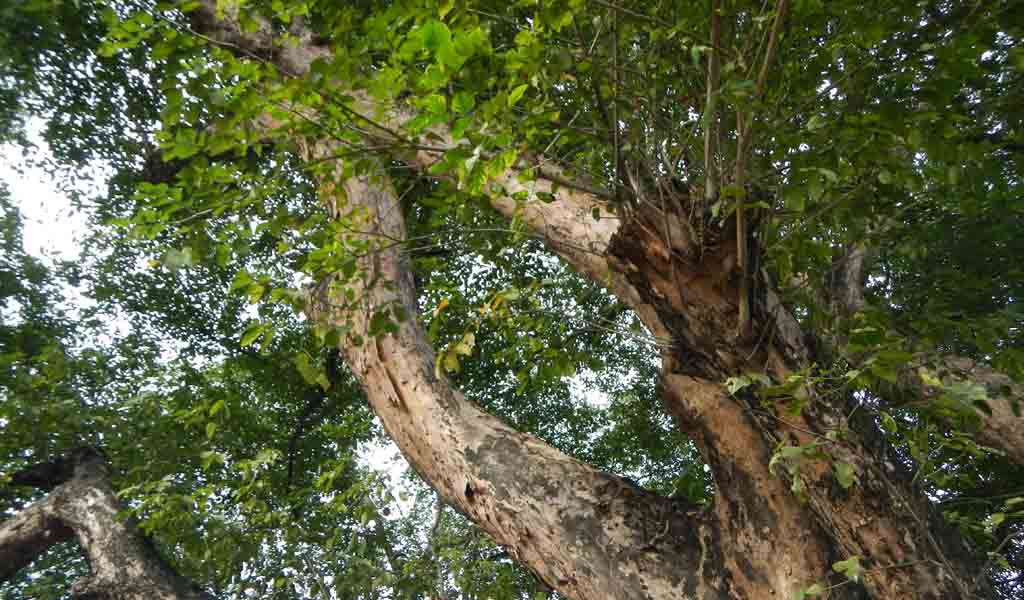Tiny But Mighty – The Fascinating World of the Philippine Mouse-deer
Welcome to the world of the Philippine mouse-deer, one of the most enigmatic and adorable creatures in the animal kingdom! Despite its small size, this elusive mammal has captured the hearts of many with its unique features and intriguing behavior. Join us on a journey to uncover the secrets of this fascinating creature and learn why it’s a true gem of the Philippines.
The Philippine Mouse-deer – An Overview
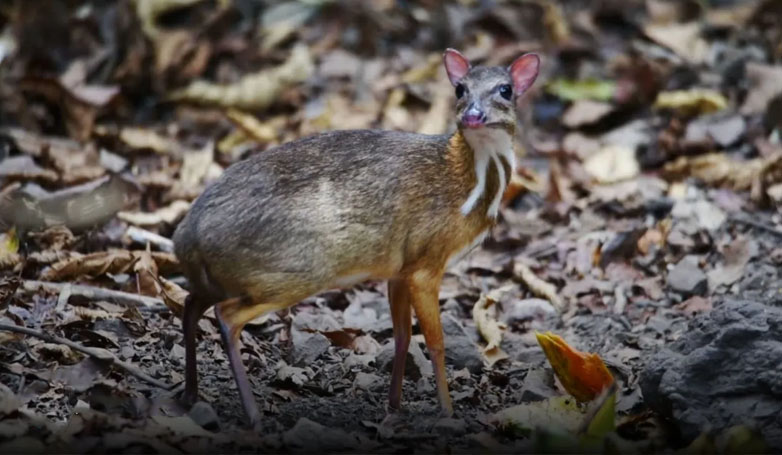
The Philippine mouse-deer, also known as the Balabac chevrotain or the Philippine mouse-deer, is a fascinating and unique species of ungulate found in the Philippines. Despite its name, it is not a true deer but belongs to the family Tragulidae. It is one of the smallest hoofed mammals in the world, with adults typically weighing between 1.5 to 2.5 kilograms and standing about 25 to 30 centimeters tall at the shoulder.
These tiny creatures are characterized by their slender bodies, short legs, and small, pointed hooves. They have a reddish-brown fur coat with white spots on their sides, which helps them blend into their forest habitat. Their diet consists mainly of leaves, fruits, and other plant materials.
The Philippine mouse-deer is primarily nocturnal, which means they are most active during the night. They are shy and elusive animals, often avoiding human contact and staying hidden in dense vegetation. They are solitary animals, except during the mating season when they seek out a mate.
Unfortunately, the Philippine mouse-deer is facing threats due to habitat loss caused by deforestation and hunting for their meat. Conservation efforts are being made to protect these unique creatures and their habitat to ensure their survival for future generations.
Habitat and Distribution
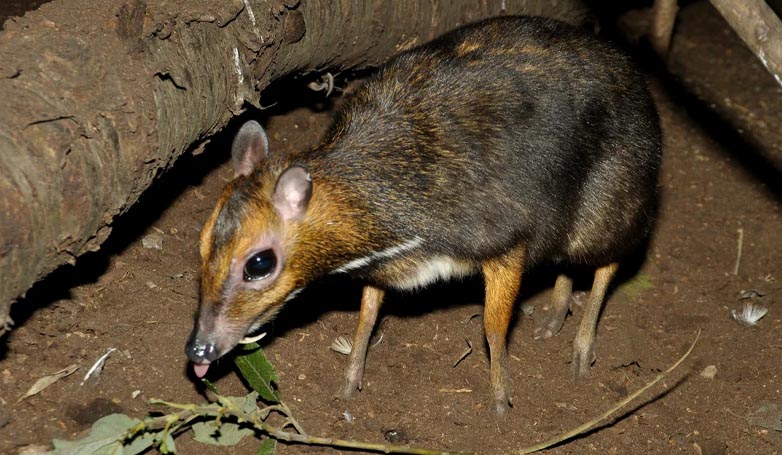
The Philippine mouse-deer, also known as the Philippine or Balabac chevrotain, is a fascinating and elusive creature with a unique habitat and distribution. This tiny ungulate is native to the Philippines, specifically found in the islands of Palawan, Balabac, and nearby smaller islands. Here’s a closer look at its habitat and distribution:
Habitat
The Philippine mouse-deer is typically found in dense tropical forests, including both primary and secondary forests. It prefers areas with thick undergrowth, as this provides cover and protection from predators. These forests are often humid and rich in vegetation, providing the mouse-deer with ample food sources.
Distribution
As mentioned, the Philippine mouse-deer is endemic to the Philippines. Within the country, it is primarily found in Palawan, the largest island in the Palawan province, and the nearby Balabac Island. It is also reported to inhabit some smaller islands in the region, though its exact distribution on these islands is not well-documented.
Physical Characteristics
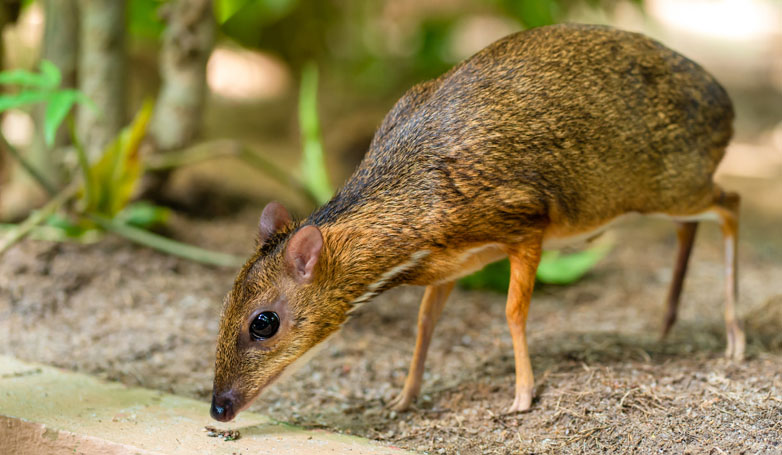
When discussing the physical characteristics of the Philippine mouse-deer, it’s important to paint a vivid picture for your readers. Begin by describing its size, which is notably small, typically ranging from about 40 to 60 centimeters in length and standing at a height of around 30 centimeters at the shoulder. This miniature stature is one of the most distinctive features of this species.
Next, delve into its appearance. The Philippine mouse-deer has a slender body with delicate legs, giving it a graceful and agile appearance. Its fur is usually a rich, reddish-brown color, blending in with the forest undergrowth where it resides. This fur is soft and dense, helping to keep the animal warm in its natural habitat.
Another key physical characteristic is its distinctive facial features. The Philippine mouse-deer has large, expressive eyes that are well-adapted for nocturnal activity, as this species is primarily crepuscular, meaning they are most active during dawn and dusk. Its ears are also large and mobile, allowing it to detect sounds from its surroundings, which is crucial for its survival.
Additionally, mention the unique anatomy of the Philippine mouse-deer’s feet. They have hooves with two functional toes, which are covered in a tough, keratinized skin that helps them navigate the forest floor quietly and efficiently.
Behavior and Diet
The Philippine mouse-deer, scientifically known as Tragulus nigricans, is one of the smallest hoofed mammals in the world, endemic to the Philippines. Here’s a breakdown of its behavior and diet:
Behavior
- Nocturnal: Philippine mouse-deer are primarily nocturnal, meaning they are most active during the night. This behavior helps them avoid predators and also allows them to forage for food in relative safety under the cover of darkness.
- Solitary: These tiny deer are typically solitary animals, preferring to live and forage alone rather than in groups. This behavior reduces competition for resources and minimizes the chances of being detected by predators.
- Shy and elusive: Philippine mouse-deer are known for their shy and elusive nature. They are cautious animals and tend to flee at the slightest sign of danger, relying on their excellent agility and camouflage to escape threats.
- Territorial: While they may not form social groups, Philippine mouse-deer are territorial animals, marking their territory with scent glands located on their feet. They use these scent markings to communicate with other individuals and to establish and defend their territory.
Diet
- Herbivorous: Like other members of the mouse-deer family, the Philippine mouse-deer is herbivorous, meaning its diet consists primarily of plant matter. They feed on a variety of vegetation found in their habitat, including leaves, fruits, buds, and shoots.
- Selective feeders: Despite their small size, Philippine mouse-deer are selective feeders, carefully choosing which plants to consume based on factors such as nutritional content and availability. This selective feeding behavior helps them maximize their intake of essential nutrients.
- Adaptability: Philippine mouse-deer are highly adaptable when it comes to their diet, able to consume a wide range of plant species depending on what is available in their environment. This adaptability allows them to survive in diverse habitats, from dense forests to agricultural areas.
Reproduction
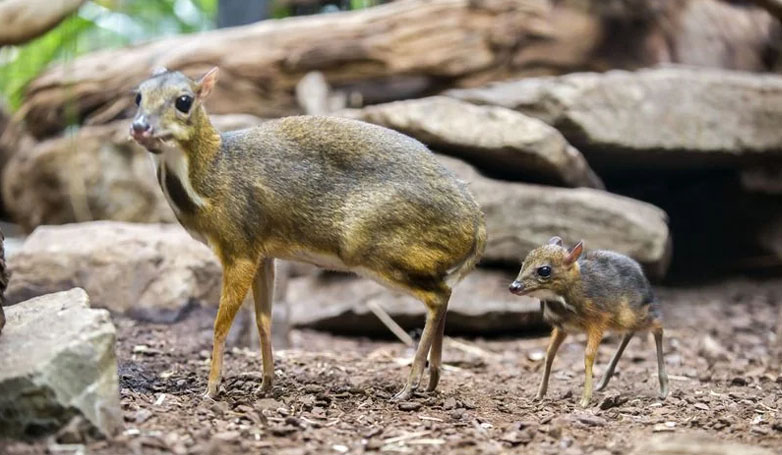
Although the specific details regarding the reproductive habits of the Philippine mouse-deer remain largely undocumented, it is widely acknowledged that females typically give birth to a single offspring following a gestation period of approximately six months. The young are considered precocial, a term indicating that they are relatively advanced in terms of maturity and mobility at the time of birth.
Conservation Status
The conservation status of the Philippine mouse-deer is of grave concern, as it is currently categorized as Endangered by the International Union for Conservation of Nature (IUCN). This designation is primarily attributable to several key threats, including extensive habitat loss stemming from deforestation, rampant hunting for meat, and heightened competition with other species for crucial food and resources.
Conservation Efforts

To counter the looming threat of extinction faced by the Philippine mouse-deer, concerted efforts are being undertaken to conserve both the species and its natural habitat. These initiatives encompass a range of strategies, including the establishment of protected areas such as national parks and wildlife sanctuaries. Additionally, various community-based conservation programs have been implemented, with the overarching goals of enhancing public awareness and fostering sustainable practices to ensure the continued survival of this endangered species.
Conclusion
The Philippine mouse-deer may be small in size, but it plays a significant role in the ecosystem of the Philippines. As we continue to learn more about this fascinating creature, it is crucial that we work together to protect its habitat and ensure its survival for generations to come. So, let’s join hands in preserving the natural heritage of the Philippines and celebrate the unique beauty of the Philippine mouse-deer!



